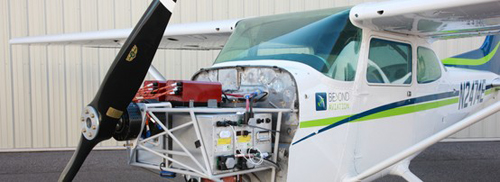Part Selection
When it comes to innovation, there is a steep requirement for the use of creativity. Even the very best engineer will never be successful without investing their mind, ideas, and entire self in the new ideals. For aviation, there is less available room for this type of creativity. Since the physics of aviation have yet to change, the overall ideas will remain the same. The room for creative expression comes from the use of custom ideas and unique parts. This project highlights how no matter what your limitations are, they can be surpassed by a creative mind.
In order to completely revitalize the aviation industry in the method required for the complete shift into electric aviation, the totality of the current parts mindset must be reversed. This means altering the current standards as well and making completely unique parts. This would not be the first time in aviation history that this has occured and in fact there is a trend! The following are stories of how the aviation industry has completed some truly amazing feats of creativity:
- Beechjet LH Windshield PN 45AS31001-023
Before the invention of the modern winshield, flying was a much more dangerous game. The modern windshield includes a large amount of sensors and torsion detecting devices that alert the pilot to any defects. The beechjet windshield listed above was the first to make the windshields a "smart part". The engineers at beechjet saw that there was a disproportionate amount of AOG time origninating from suprise failures from windshields and rather than accepting this as the new standard, they attacked the problem head on. The addition of sensors and torsion detection increased the lifespan of the windshields as they could now be repaired before they broke and also allowed the maintenance teams to proactively prevent AOG situations. This kind of mentality, the invention of the "smart part" is the future of aviation. - Learjet Wheel Assembly PN 5004913-6
Another crucial necessity is for creative alteration. The team at Learjet knew that if they wanted to stay competitive with the cessna teams after the Bombardier buyout, they were going to need to have a slick competitive advantage to make up for the increases in corporate overhead. This resulted in the race to create the now reknown Learjet 45 aircraft. This aircraft was going to make them famous. However, to compete with the legacy Citation Jet series, they needed to make the aircraft faster, safer, and more effecient. The obvious answer was to lower the weight of the previous generations. The goal of the project was to decrease weight by 5%. At the end of the project the most success was through the teams ability to decrease the weight of the wheel assymblies by over 35% while also increasing endurance through new design initiatives. The above wheel made up 1% of the weight reduction and played a role as motivation to the rest of the engineering team.
A special thanks to Jet Parts Liquidator for these stories!


